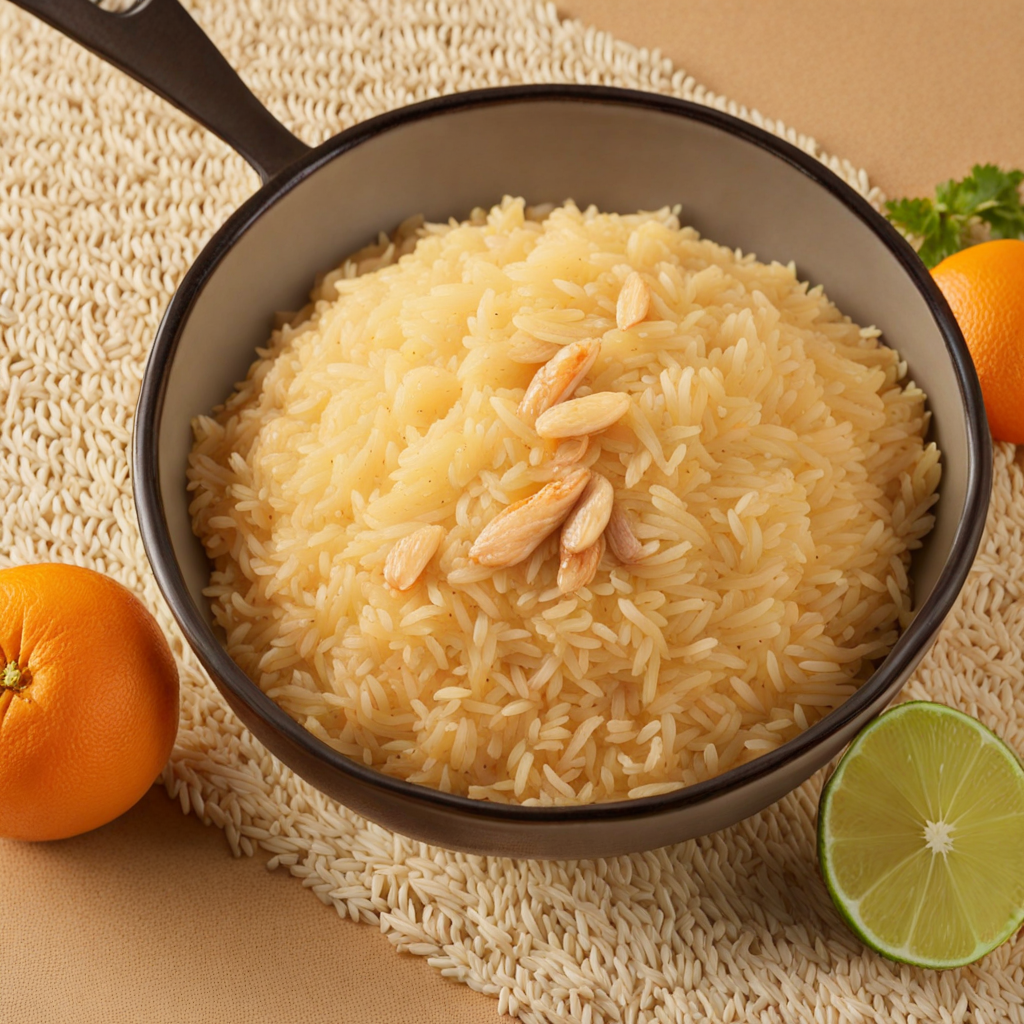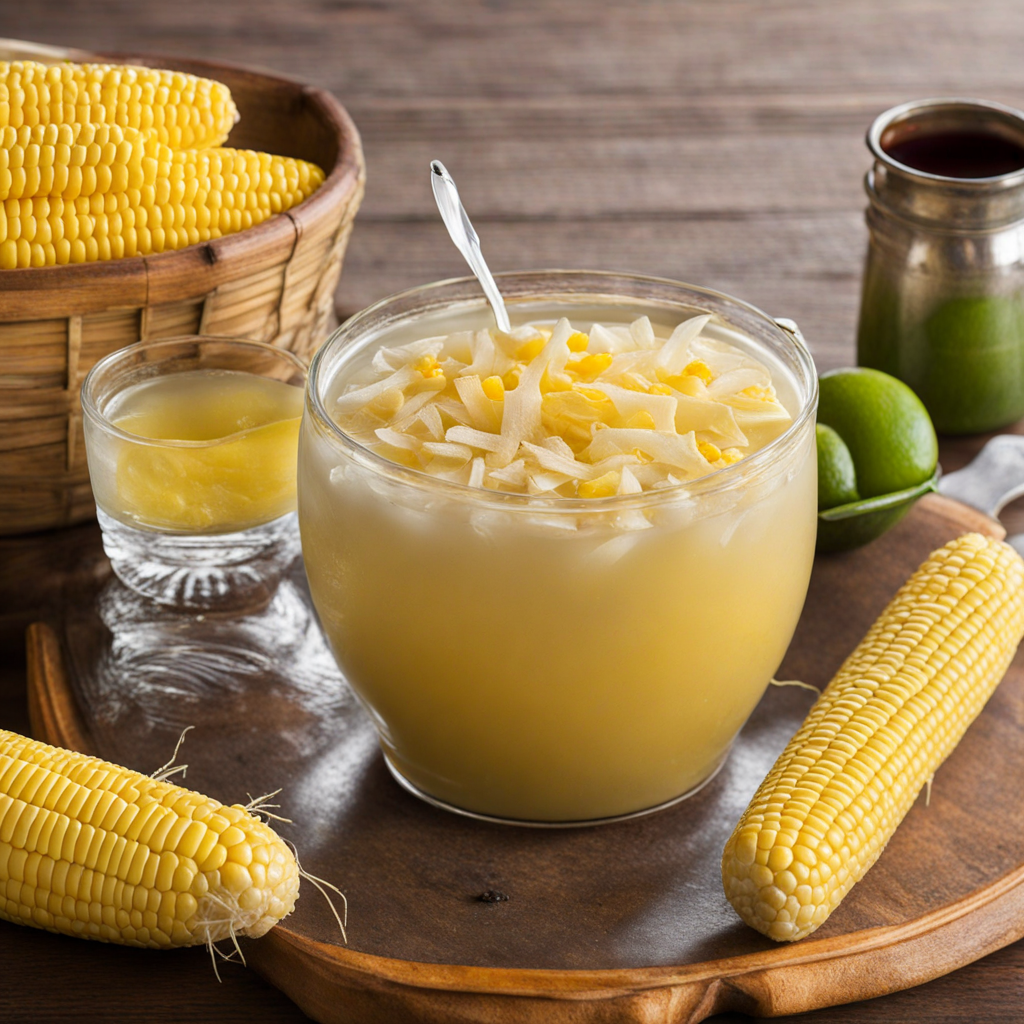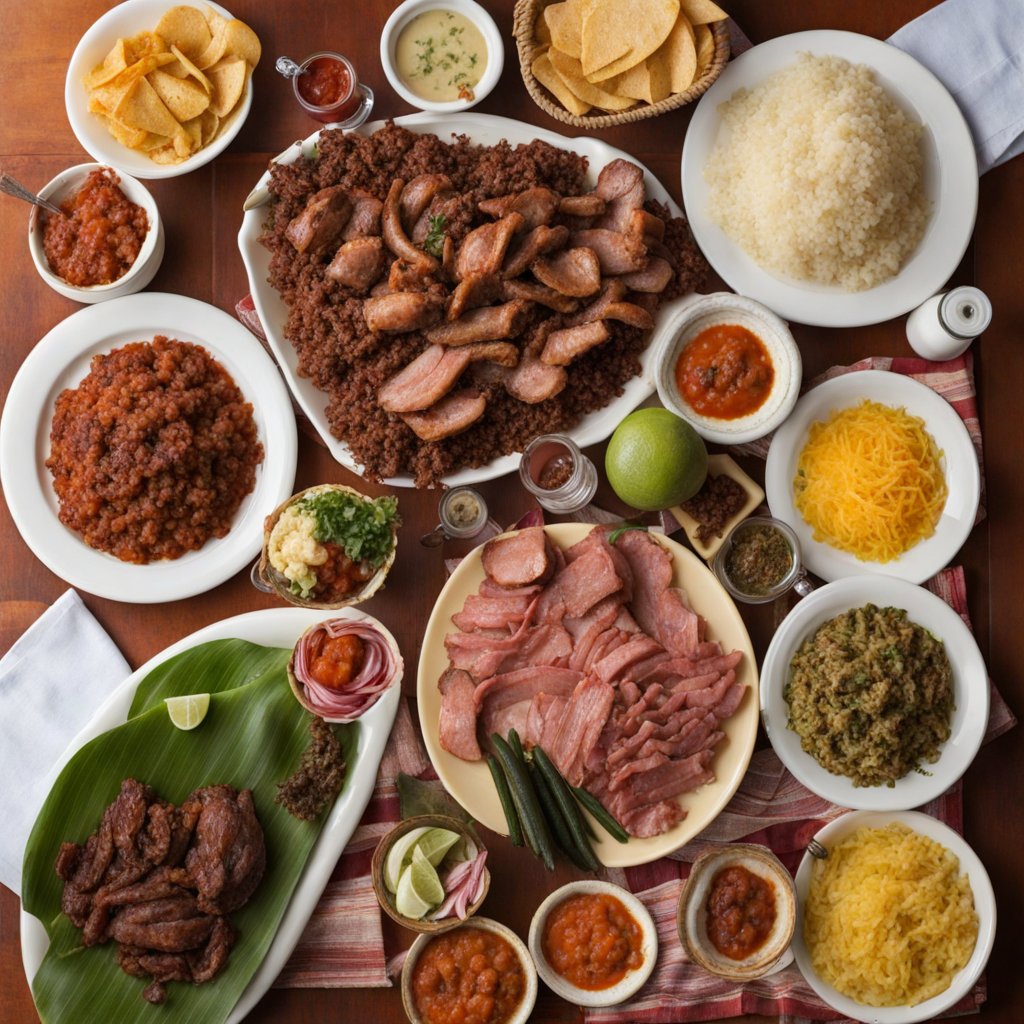Arroz Agria
Arroz Agria is a traditional Nicaraguan dish that translates to "sour rice," and it is a wonderful representation of the country's vibrant culinary heritage. The dish features rice that is cooked with a unique blend of ingredients that impart a delightful tanginess. One of the key components is the use of sour orange juice, which gives Arroz Agria its signature flavor, balancing acidity and a hint of sweetness. The rice is often combined with bell peppers, onions, and garlic, creating a fragrant base that complements the sour notes beautifully. The preparation of Arroz Agria often includes the addition of meats such as chicken, beef, or pork, which are marinated in the sour orange juice before being cooked with the rice. This not only enhances the flavor but also allows the juices to seep into the grains, creating a dish that is both hearty and refreshing. In some variations, you might also find the inclusion of olives, capers, or even tomatoes, adding layers of flavor that make each bite a delightful experience. Served as a main dish or a side, Arroz Agria is often accompanied by fresh avocado, fried plantains, or a simple salad, making it a well-rounded meal. The colorful presentation, with its vibrant yellow or orange hues from the spices and ingredients, makes it visually appealing as well. For those looking to explore Nicaraguan cuisine, Arroz Agria offers a deliciously unique taste that is both comforting and exotic, showcasing the country's love for bold flavors and fresh ingredients.
How It Became This Dish
The Flavorful Journey of Arroz Agria: Nicaraguan Culinary Heritage #### Origins Arroz Agria, a vibrant and tangy rice dish from Nicaragua, has its roots deeply embedded in the country’s rich agricultural landscape and cultural mosaic. The term "Arroz Agria" translates to "sour rice," which reflects both its unique flavor profile and the traditional techniques used in its preparation. The origins of this dish can be traced back to the indigenous peoples of Nicaragua, who cultivated a variety of grains, legumes, and vegetables long before the arrival of Spanish colonizers in the 16th century. The Nicaraguan landscape is characterized by its fertile soil and diverse ecosystems, which made it an ideal location for agriculture. Indigenous communities grew crops such as maize, beans, and rice— the latter introduced by the Spanish during the colonial period. Rice became a staple in Nicaraguan cuisine, eventually evolving into various regional dishes, including Arroz Agria. #### Cultural Significance Arroz Agria is more than just a dish; it embodies the spirit of Nicaraguan culture, reflecting both its indigenous roots and the influences of Spanish colonialism. The sourness of Arroz Agria is typically achieved through the use of sour orange juice (naranja agria), a key ingredient that adds a unique tang. This ingredient not only imparts flavor but also symbolizes the fusion of local and European culinary practices. The dish is often prepared for special occasions, family gatherings, and communal celebrations, making it a significant part of Nicaraguan culture. It is commonly served alongside traditional proteins such as grilled meats or fried fish, further enhancing its role as a centerpiece in communal dining. The preparation of Arroz Agria is often a communal activity, with families coming together to create the dish, thereby reinforcing social bonds and cultural identity. #### Development Over Time As Nicaragua's population evolved, so did its culinary practices. The influence of African, Caribbean, and Creole cultures played a pivotal role in shaping the flavors and techniques associated with Arroz Agria. The arrival of African slaves brought new spices and cooking methods that enriched Nicaraguan cuisine. Ingredients such as garlic, onion, and various peppers became essential in the preparation of many traditional dishes, including Arroz Agria. In the 19th and 20th centuries, as Nicaraguan society underwent significant changes due to political instability and economic shifts, the ways in which food was prepared and consumed also transformed. Urbanization led to changes in dietary habits, with a growing number of people moving to cities and adapting traditional recipes to fit modern lifestyles. While Arroz Agria remained a beloved dish, its preparation methods sometimes became simplified, and the communal aspects of cooking were lost in the hustle and bustle of urban life. Despite these changes, the essence of Arroz Agria has endured. Many Nicaraguans still cherish the dish for its nostalgic value and connection to their heritage. In rural areas, the traditional methods of preparing Arroz Agria are still upheld, often accompanied by storytelling and laughter as families gather around the stove. #### Ingredients and Preparation The preparation of Arroz Agria is a labor of love that showcases the importance of fresh, local ingredients. While variations exist, the core components typically include long-grain rice, sour orange juice, garlic, onion, bell peppers, and a blend of spices such as cumin and oregano. Some recipes may incorporate additional ingredients like cilantro, jalapeños, or tomatoes, depending on regional preferences. To prepare Arroz Agria, the process usually begins with sautéing the garlic, onion, and bell peppers in a bit of oil until fragrant. The rice is then added to the mixture, allowing it to absorb the flavors. The sour orange juice, along with water or broth, is added to cook the rice, imparting its characteristic tanginess. The dish is often garnished with fresh herbs and served warm, making it a comforting and satisfying meal. #### Contemporary Context In recent years, there has been a resurgence of interest in traditional Nicaraguan cuisine, both locally and abroad. Chefs and home cooks alike are embracing the flavors and techniques of their ancestors, seeking to preserve and celebrate their culinary heritage. Arroz Agria has found its place on the menus of both traditional and contemporary Nicaraguan restaurants, often presented with a modern twist. Culinary tourism has also played a role in promoting Arroz Agria as an emblem of Nicaraguan identity. Food festivals, cooking classes, and cultural events often showcase this dish, allowing visitors to experience the rich flavors of Nicaragua firsthand. As more people discover the joys of Nicaraguan cuisine, Arroz Agria stands out as a must-try dish, embodying the country’s history, culture, and vibrant agricultural traditions. #### Conclusion Arroz Agria is a testament to the resilience and adaptability of Nicaraguan culinary traditions. Rooted in indigenous practices and enriched by centuries of cultural exchange, this dish continues to thrive in the hearts and kitchens of Nicaraguans. Its tangy flavor and communal preparation reflect the spirit of a nation that values family, tradition, and the joy of sharing a meal. As modern society evolves, Arroz Agria remains a cherished link to the past, a flavorful reminder of Nicaragua's rich history and cultural tapestry. Through each bite, one can savor not only the unique flavors of this beloved dish but also the stories and traditions that have shaped its legacy over time.
You may like
Discover local flavors from Nicaragua







